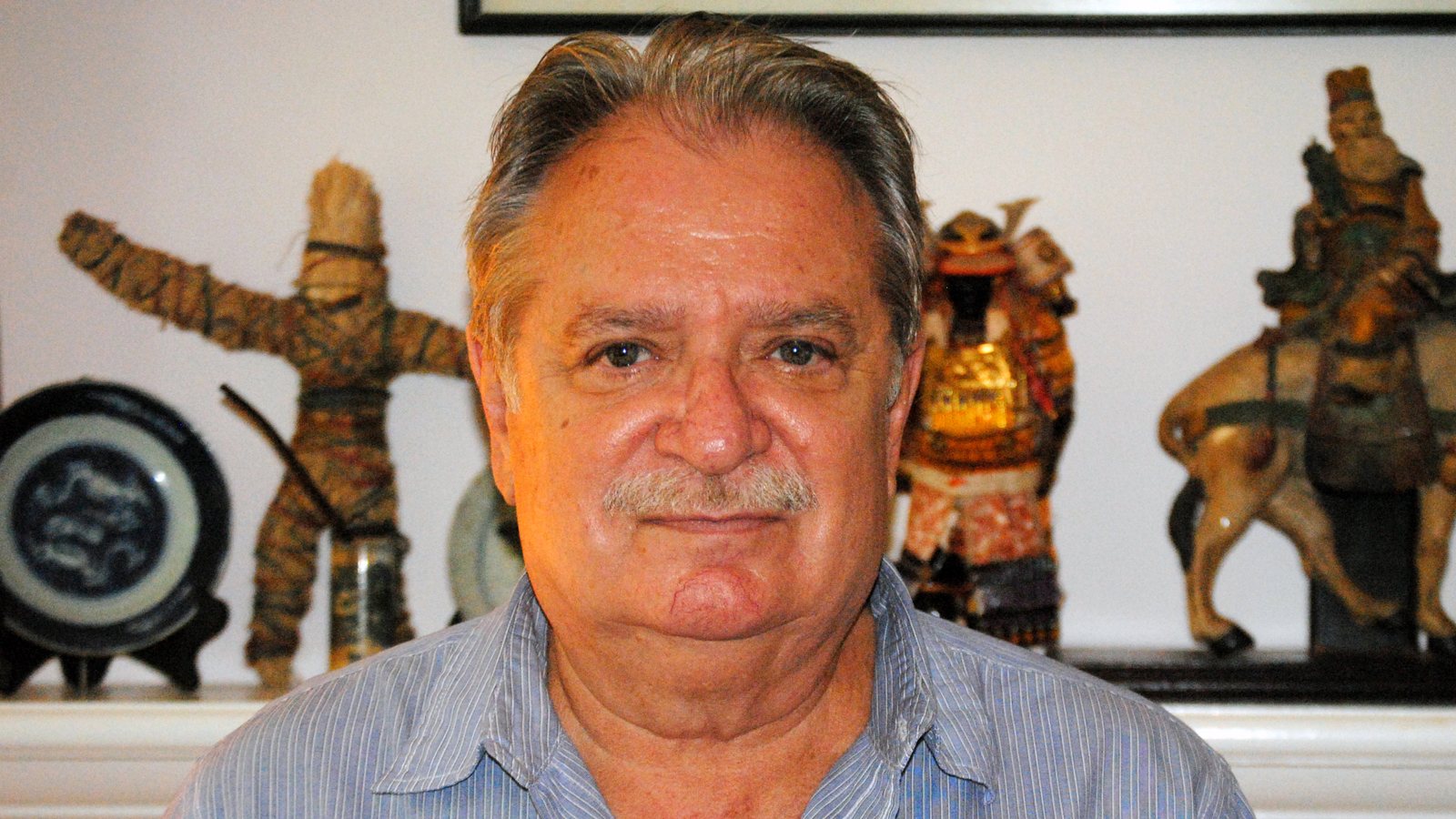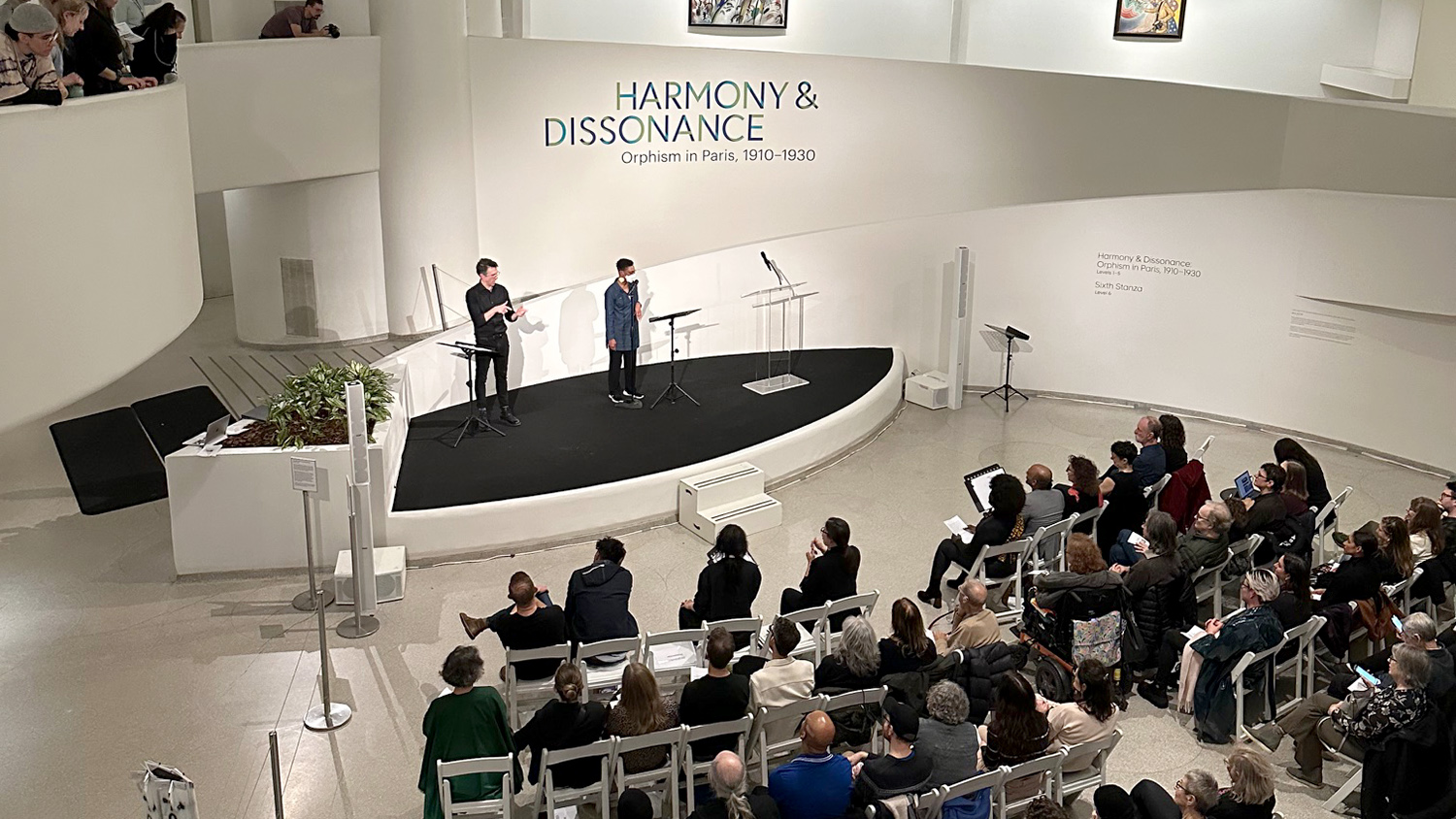Retiring NC State Poet Helped Save Endangered Script from Extinction

After trending toward extinction for decades, the fate of Vietnam’s ancient script, Chữ Nôm, now has a healthier outlook.
With a few strokes on the keyboard, anyone with a computer can write in Nôm: 字. That character, for instance, represents the Nôm word for “word.”
In addition, thousands of documents are being translated and digitized. New dictionaries and online look-up tools provide places to search for words.
NC State English professor John Balaban has helped lead many of the developments that kick-started Nôm’s rebound from an endangered calligraphic way of writing to a preserved tradition.
From translating the first Nôm book to be printed from a printing press, to working with other scholars to create the Vietnamese Nôm Preservation Foundation that continues to digitize texts today, Balaban’s initial interest in Vietnamese poetry has morphed into an admiration of the nation’s ancient culture.
The Vietnamese relics, photographs and writings that abound in Balaban’s home give some insight into his fondness for the country and its people. They’ll remain there, even as he takes a step back from his work with the Nôm Preservation Foundation and retires from his role at NC State.
Balaban has served as a professor of English for nearly 45 years at various institutions. He’s spent the past 15 at NC State, where he’s also served as the university’s poet in residence and where he helped establish the highly respected MFA Program in Creative Writing.
A recipient of The Academy of American Poets’ Lamont Prize, the Poetry Society of America’s William Carlos Williams Award, a Guggenheim Fellowship and a National Poetry Series Selection, Balaban was also a two-time nominee for the National Book Award.
Balaban, who incorporates Vietnamese texts and translations into a literature of East Asia course that he occasionally teaches, has written 12 books of poetry and prose, many of which also speak to his time in Vietnam.
He first traveled to the country in 1967 as a conscientious objector during the Vietnam War. After teaching linguistics for a year at a university, he volunteered as a field representative for a group that helped evacuate war-injured children.
“Our job was to get them out of Vietnam and get them to hospitals in the United States,” Balaban said. “When they were well enough to come home, we’d bring them back to their families.”
Balaban spent two years volunteering with the Committee of Responsibility to Save War Burned and War Injured Children. It was during that time — even amid tragedy — when he started to hear poetry coming from the countryside.
“I’d be at a river crossing, waiting for a ferry to take me to the other side, and there’d sometimes be a blind person, led by a little boy, singing this old poetry,” Balaban described. “Sometimes there’d be a boat going by, and a woman singing.”
The Vietnamese he met not only sang the oral folk poetry known as ca dao, Balaban said, but also referenced it in debate and while telling stories.
Fascinated by what he was hearing, Balaban returned to Vietnam in 1971 to capture the poetry on tape.
Through a National Endowment for the Humanities grant, he spent a year recording farmers largely in and around the Mekong Delta. He transcribed the recordings into Vietnamese and published them —poems that for the most part had never appeared in print anywhere.
‘Spring Essence’
While recording the poetry from 1971-72, Balaban talked with locals about literature in general. Some suggested names of writers he should translate.
One 18th century poet, Hồ Xuân Hương, came up quite often. Hương was a concubine, or second wife, whose brand of risqué and rebellious poetry was unique for its time and often critical of male authority.
Hương wrote in Nôm, a script that was rebellious in itself.
From the first century A.D. onward, Vietnamese wrote in Chinese. However, that changed around 1,000 A.D., after Vietnam won independence from China and developed its own writing system. It was Nôm, a script similar to Chinese that served as the national vernacular script until the French forbade its use in 1920.
As the use of Nôm decreased and modern Vietnamese, quốc ngữ, became more prominent, fewer and fewer people knew how to read the script, Balaban said. In addition, the Nôm that already existed was written by woodblock, hand-carved or hand-inked, relegating the text to materials that often weren’t preserved and always had limited access.
It was a trend toward obsolescence, one that started to reverse when Balaban began translating Hương’s poetry.
Balaban worked with New York University professor Ngô Thanh Nhàn, who created a TrueType font for Nôm. That development, which allowed the ancient script to be keyed into the computer, led to the first typographic printing of Nôm in the book “Spring Essence: The Poetry of Hồ Xuân Hương along with Balaban’s translations.”
More significantly, the new font meant Nôm could be further preserved through digitization.
Nôm preservation
“Spring Essence” was published in 2000, the same year Balaban started teaching at NC State. The project and newly created Nom Na Tong TrueType font unlocked the possibility to translate, reprint and digitize nearly 1,000 years of Nôm writings stored largely in libraries and temples around the world.
To try and preserve as many of those writings as possible, Balaban and several other scholars founded the Vietnamese Nôm Preservation Foundation. The group, consisting of Nôm scholars from around the world, has since helped translate thousands of documents while encouraging others to preserve the tradition.
At the Vietnamese national library in Hanoi, for example, Balaban and other scholars started working in 2007 to digitize more than 4,000 Nôm writings, many of which were literally rotting with bookworms. The NCSU Libraries donated funding and materials to aid the project, such as acid-free boxes that help preserve the documents.
“In the Communist era, a lot of temples were destroyed. These materials are important because no scholars have looked at them before,” Balaban said. “People understand the idea of digitizing a text, but the idea of digitizing a whole space has vast cultural value as well.”The Foundation’s work also includes translating and digitizing Nôm at temples. At the Thắng Nghiêm Buddhist temple, the Nôm Foundation is preserving not only texts, but stone inscriptions, murals, placards and architecture. NC State’s College of Humanities and Social Sciences research office helped Balaban secure funding for travel and time away for the temple project. The U.S. Embassy in Hanoi and the Ford Foundation also helped, along with the Chino Cienega Foundation and the International Music and Art Foundation, among many other individuals.
Through the Nôm Preservation Foundation, Balaban has also helped Nôm scholars publish dictionaries and online resources for translation. A look-up tool on the foundation’s website allows anyone to search in Vietnamese or English for anything from broad concepts like “peace” (憺) and “love” (恋), to more specific words like “water chestnut” (荸) and “brindled ox” (犖).
Perhaps fewer than 100 scholars around the world can read Nôm. Balaban, who received the medal of appreciation from the Vietnam Ministry of Culture, Sports and Tourism for his work, said he can only follow the ancient script in modern Vietnamese transcription.
And while Balaban now plans to take a step back from the Nôm Foundation, his legacy will live on through an annual endowment award in his name. Since 2009, the foundation has given the Balaban Award to individuals who help preserve and propagate the 1,000-year heritage of writings.
The award was named by its benefactors, Dr. Phùng Liên Đoàn, a nuclear physicist, and his wife, Thư Lê, who joined Balaban in helping comfort war-injured children during the Vietnam war. Balaban said he is both embarrassed and pleased that his name is attached to it, but proud nonetheless that it’s helping Vietnamese scholars continue to preserve the ancient script.
“It’s such an important heritage that needs to be preserved,” Balaban said.
“Because of my background with the war, people try to make my overly long endeavors with this a part of dealing with the war. But if it ever began that way, it didn’t last very long. It’s simply fascinating work.”
- Categories:


